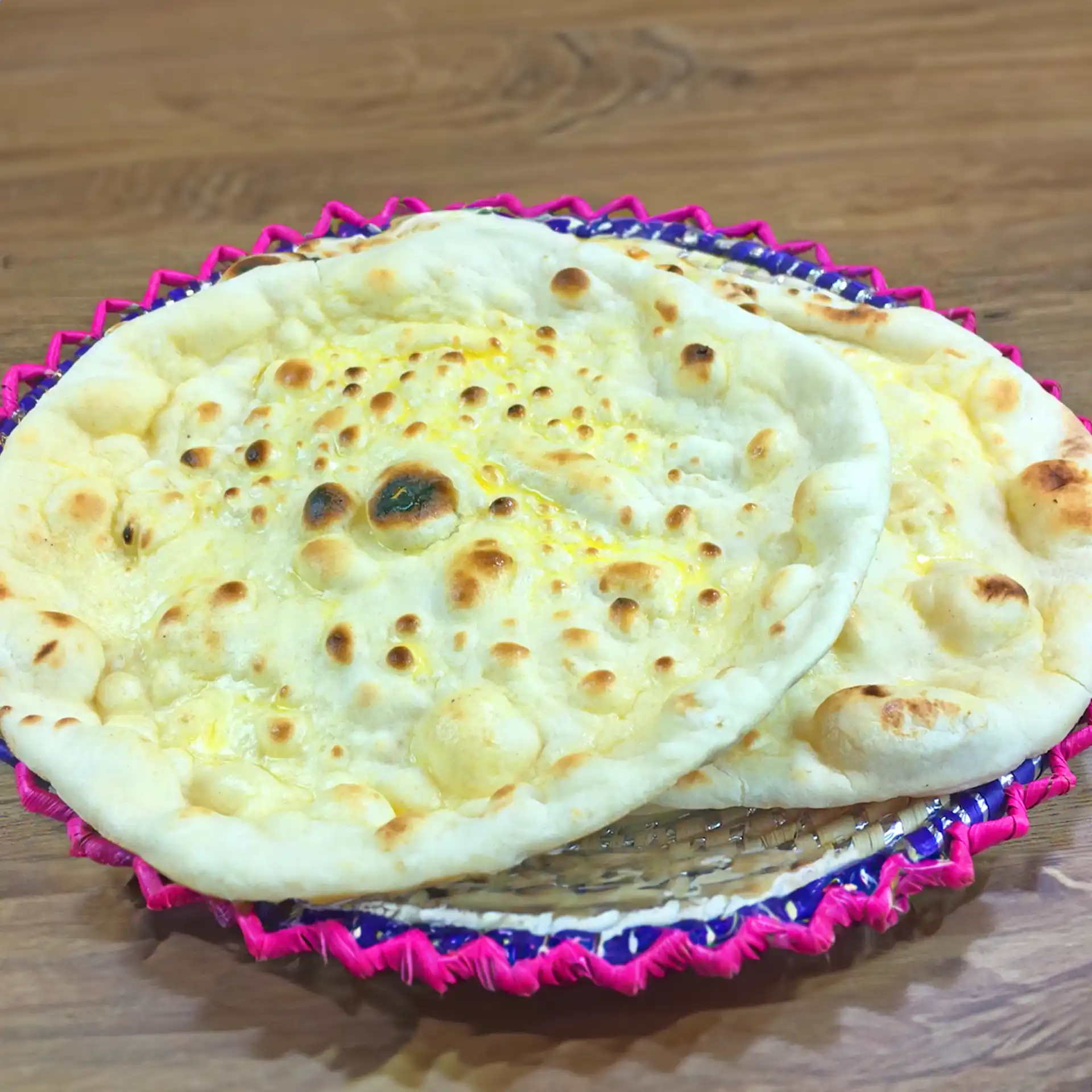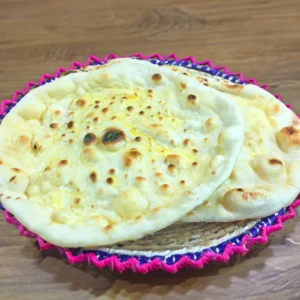
Originating from South Asia, naan is a traditional flatbread that has become a staple in many households around the world.
Its soft and fluffy texture, combined with a slightly crispy exterior, makes it the perfect accompaniment to a variety of dishes, from savory curries to succulent kebabs.
Despite its exotic origins, making naan at home is surprisingly simple, even for beginners in the kitchen. With just a few basic ingredients and some patience, you can whip up a batch of delicious naan that will impress your family and friends.
While some may find the idea of making bread from scratch daunting, fear not! This recipe for homemade naan is beginner-friendly, requiring only pantry staples like flour, yeast, and salt.
With a little bit of kneading and some time to let the dough rise, you’ll be rewarded with fresh, homemade naan that’s far superior to anything you can buy at the store.
With this easy naan recipe, you’ll be enjoying restaurant-quality flatbread in the comfort of your own home in no time.
Expert Tip: Don’t skip the step of letting the dough rise. Allowing the dough to rest and ferment helps develop flavor and texture, resulting in naan that’s tender and flavorful.
Self Raising Flour: This versatile ingredient forms the base of our naan dough, providing structure and volume to the bread. Its self-rising properties eliminate the need for additional leavening agents, making the preparation process simpler.
Eggs: Eggs contribute to the richness and texture of the naan, giving it a soft and tender crumb. They also help bind the ingredients together, ensuring a cohesive dough.
Salt: A pinch of salt enhances the flavor of the naan, balancing the sweetness of the sugar and adding depth to each bite.
Sugar: A small amount of sugar helps activate the yeast and promote fermentation, resulting in light and airy naan with a subtle hint of sweetness.
Yeast: Yeast is the magic ingredient that makes our naan dough rise, creating those irresistible pockets of air and giving the bread its signature fluffy texture. Make sure to use warm water to activate the yeast effectively.
Milk: Adding milk to the dough enriches it, resulting in a softer and more flavorful naan. The milk also helps tenderize the gluten in the flour, resulting in a more tender crumb.
Oil: Oil adds moisture to the naan dough, keeping it soft and pliable. It also contributes to the richness of the bread and helps prevent it from sticking to the pan during cooking.
Expert Tip: To achieve a soft and fluffy texture, knead the dough well until it becomes smooth and elastic. This helps develop the gluten in the flour, resulting in a lighter and more airy naan.
Expert Tip: Make sure the water used to activate the yeast is warm, but not too hot, as water that is too hot can kill the yeast and prevent the dough from rising properly.
Making naan from scratch typically takes about 1 to 1.5 hours from start to finish. This includes time for preparing the dough, allowing it to rise, shaping the naan, and cooking them on the stovetop.
While traditional naan recipes call for yeast to help the dough rise, you can make a quick version of naan using baking powder instead. However, the texture and flavor may differ slightly from traditional yeast-risen naan.
Yes, you can freeze leftover naan for later use. Once cooled completely, wrap the naan tightly in plastic wrap or aluminum foil, then place it in a freezer-safe bag or container. To reheat, simply thaw the naan at room temperature or in the refrigerator, then warm it in a preheated oven or toaster oven until heated through.
Yes, you can make gluten-free naan by using a gluten-free flour blend in place of the self-raising flour. Keep in mind that the texture and flavor may vary slightly from traditional naan made with wheat flour.
Yes, you can use whole wheat flour to make naan, but you may need to adjust the amount of liquid in the recipe to achieve the desired consistency. Whole wheat flour tends to absorb more liquid than all-purpose flour, so you may need to add additional water or milk to the dough.
Here are some more recipes for you to enjoy! If you my recipes don’t forget to rate and leave a comment.
If you have any recipe suggestions, please do not hesitate to ask me. A great way to stay in contact with me is through Instagram, Facebook, Twitter and YouTube. Don’t forget to tag me @CookwithNabeela in your recipe photos!

Subscribe now to receive my latest recipes directly in your inbox. Stay up-to-date and never miss out!

I love to cook! I want to share with you my favourite, delicious family-friendly recipes. I want to inspire you to create fantastic food for your family every day.
Latest comments (6)
Salaam I would like to make a big batch of these so I have tripled the recipe, do I need 3 eggs or would 2 be enough – only asking because my mum is funny with eggs lol
Thanks
Tried this recipe and it turned out fab! Would definitely recommend. Only question is if I wanted to make half the quantity do I need to half all the other ingredients too?
Thank you! Yes, half the ingredients, and you can keep the egg quantity the same.
Brilliant thank you
Would like to try this recipe ?
You should definitely give it a try! Let me know how it turns out for you 🙂